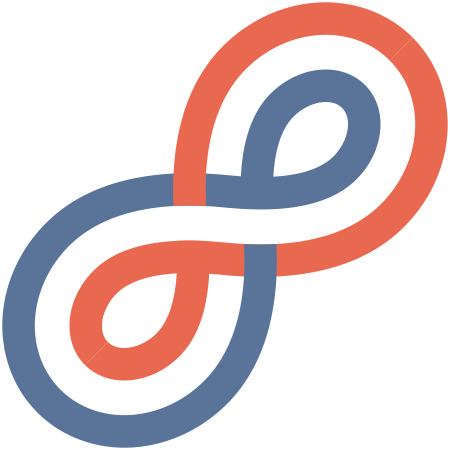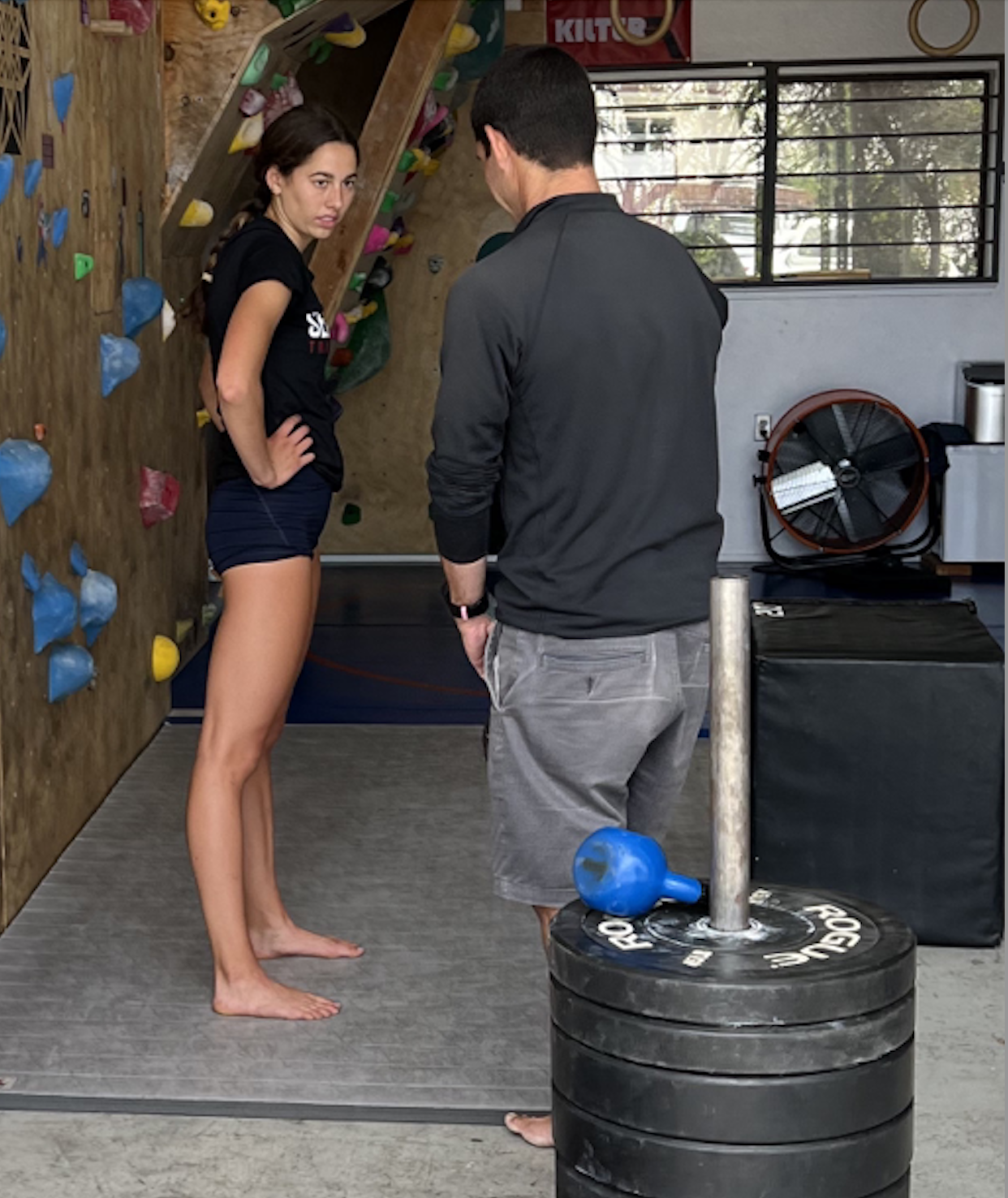So, You’re Quad-Dominant
People dish out quad-dominant diagnoses as if Sir-Mix-a-Lot was their lord and savior. “It’s sinful to use your quads that much. Have you heard about the glutes? I’m here to help you find them—thick and juicy. Your derriere will save you.”
They’re not wrong. Butts are essential, and I cannot lie. But the quartet of femoral neighbors need not be demonized.
If a practitioner or coach has told you you’re too quad-dominant, I have some good news: humans are a quad-dominant species. We evolved to have quads twice the size of our hamstrings because upright spines make knees and quads work a lot (1). I realize that means nothing to you without a comparison: our four-legged predecessors have a one-to-one ratio of thigh musculature.
Rather than read the research paper that houses that fact, I’d prefer you experience it yourself. Get out of whatever city or suburb in which you live and go for a one to three-hour hike on variable terrain—the kind of time and terra firma for which we evolved. Flat ground will work if you go for long enough, but undulating earth would be better. When going uphill, yeah, you’ll lean forward and feel your backside burn. But once you’re going downhill, it would be ridiculously inefficient and awkward to abide by the Church of Gluteus Maximus and bend over to keep using your tooshie. You’d stay upright, like a good homo sapien, and use your knees and quads, and there’s nothing wrong with that.
While round rumps steal the spotlight, our knees get overlooked and undervalued. But they are a massive milestone in evolution. Every creature that needed Noah’s ark had them.
Spiders, bears, aardvarks, and hares.
Tigers, cats, baboons, and bats.
Unicorns, moles, pronghorns, and voles.
Beavers, ox, retrievers, and fox.
To fight and feed and flee,
These things all need some knees!
The only exception is snakes because snakes don’t have legs.
How Knees (And Elbows) Evolved
Life started in the water before it came on land; you probably know that. The structures of oceanic organisms evolved to move in H20 (+NaCl). Take the pectoral fin, for example. You’ll find the same bones in each fin in your arm, albeit in different shapes and sizes. Dolphins and whales have a radius, ulna, and humerus but no elbow joint. They just have shoulder joints. All of this is optimal for the water.
Fish, sharks, and marine mammals use only concentric contractions—a shortening contraction—because they always push water. Even if a shark could survive on land, it would never last because its limbs cannot fold and unfold. A single-jointed limb on shore is as nimble and elegant as a peg-legged pirate.
The eccentric contraction—a lengthening contraction—emerged when life ditched its buoyant abode and sauntered on soil that pushed equal and opposite forces back into each organism. Mother nature solved that Newtonian problem by inventing three-jointed limbs that worked like springs when they folded and unfolded via concentric and eccentric contractions. These limbs are as big of an evolutionary leap as the first flight of birds, the Wright brothers, or Neil Armstrong stepping on the moon. Knees allowed for movement in a new world.
Strangely enough, some humans who live on solid ground devolve their movement patterns—like aquatic athletes. They optimize their patterns for the water but omit their knees from propulsive phases when out of the pool. They mainly choose concentric contractions to move, which increases their risk of injury because knees aren’t meant to be extended all the time, especially not during ground contact phases. These athletes need to relearn what it means to be a land animal, which means evolving their movement and finding and using their knees again.
She (above) isn’t an aquatic athlete, yet she still devolved her movement patterns. It may seem like she overuses her quads because her knees are locked out. But this pattern is almost always associated with the under-usage of people’s thighs.
Why Bow Down To Butts?
So now that you know how (r)evolutionary these joints and their quads are, what’s with all the kiester sanctifying and vilification of the vastus musculature? Honestly, I’m not sure. I have some (fun) guesses, though.
Guess Number One:
The glutes are big and powerful; therefore, they’re the most important.
But this reason ignores that many athletes, like NFL players, have fantastically powerful fannies and still get noncontact injuries. I wonder, do they tell a guy who can squat 500 pounds and run a four-four forty that his glutes aren’t strong enough? (It might be slightly true. I have a nuanced answer to that question, which I’ll get to later.) Plenty of plump-rumped athletes still wind up unconscious in a hygienic hell with infernal lighting and strapped to a thin twin bed on rickety wheels. The Hades here doesn’t hold a pitchfork but a scalpel and charges you a thousand dollars a minute for surgery, and he doesn’t even know if it will work.
Guess Number Two:
Dat ass, when working right, keeps legs in “safe” positions.
But this second reason ignores the fact that too many athletes still rupture something while in “safe” positions, and others stay healthy despite visiting “unsafe” positions all the time. Preventing noncontact injuries and enhancing performance is much more complex than using your tuchus.
Guess Number Three:
Muscles must be balanced everywhere, can’t have those pesky quads be too strong.
I actually don’t have much of a problem with this reason, as long as you can objectively know you have a big muscle imbalance and you’re not in a sport that rewards such leg asymmetry, like cycling or speed skating. If you are, it’s something you should manage, not eliminate.
If your quads dominate your lower half, it’s because you have a movement imbalance. You never gave a reason for your hindquarters to work. No movement, no work. No work, no strength.*
Let me elaborate: If you’re one of these quad-dominant people and have repeatedly tried to engage your posterior to no avail, I have a piece of awareness for you. You might think you’re bending your hip joint during deadlifts and RDLs because people tell you those exercises improve your backside and your noggin lowers toward the floor. But you don’t tilt your pelvis over your femoral head. You move in your spine, most likely. Thus never lengthening and shortening your glutes or hamstrings. So, they don’t get nearly as strong as they could. As bonkers as this sounds, it is the bulk of my work in early sessions. People, even professional athletes, don’t know what body parts they move, leaving their potential—and millions of dollars—unharvested.
I could make guesses all day, but they don’t matter. They won’t help us solve noncontact injuries or evolve performance. What does help is improving our understanding of how this bag of bones (and its buns) evolved to move.
It evolved to do infinitely more things than repetitive and identical back squats, monster walks, Bulgarian whatever’s, and Romanian thingamajigs. As long as we continue to misunderstand what we evolved to do, and act as if we are as fragile as Venetian lace by reenacting remedial and rote movements, we will keep noncontact injuries synonymous with sports.
Before we reach our conclusion, let us rise and unite these two buttcheeks in holy matrimony. All together now.
Squeeze and stand.
Stand and squeeze.
Take off your boots,
And clench those glutes!
To save your knees,
That’s all you need.
Please take my heed,
Stand and squeeze!
Amen.
You may be seated.
The Force-Producing Organ
No matter how much back you pack, your ass ain’t holy. Your hiney isn’t more important than your knees. Your soles aren’t more important than your spine. Your transverse abdominis isn’t more important than your diaphragm or pelvic floor. Your tibialis anterior isn’t more important than your tibialis posterior. You get the point—they’re all important.
With my athletes, I focus on how their muscles organize their bones. I don’t mind if someone’s quads are the size of tree trunks as long as she moves her skeleton with human movement patterns.
No matter the anatomical gospel you hear preached from any weight training or physical therapy sect, all parts are vital because your entire body is a force-producing organ. The whole kit-n-kaboodle cooperates to create and absorb forces.
Don’t believe me? Sprint without using your arms—surely you don’t need them because they don’t push into the ground, right? Or use them but keep your head cocked to one side and see what happens. Or keep your elbows as wide as possible, like a lizard. Here’s a good one: jump, and when you land, try to prevent your head from feeling the jarring effect of coming back down to earth. Go ahead, try. I’ll wait.
Go to failure in a single leg calf raise—but with awareness! Notice that when you’re near your limit, your body will contort and search for strength to lift that heel just one more time. Put your neck, wrist, knee, ankle, or any joint in a brace, and if you’re aware, you’ll notice your entire body reorganize to change how it creates and absorbs forces in movement. You use all of your muscles and joints, to varying degrees, all the time.
The varying degrees, however, are where some evolutionary know-how comes in handy because the kit-n-kaboodle works best when it moves with human movement patterns rather than devolutions and degeneracies. Or, to use a more common word, “compensations.”
Pain, injuries, and performance are complex things, and improving any of them requires much more than a sermon from the Church of Gluteus Maximus. They need an understanding of how humans evolved—our structures and the patterns in which we best use them.
Once you’re willing to doubt what you’ve been told, you see the evidence easily. If “using your glutes more” was an effective panacea, your fantasy team wouldn’t be ravaged by injuries every year. Coaches around the world get athletes to use their glutes more and quads less, and we’re still in an injury pandemic. Athletic ailments have more causes than weak rumps and “overused” thighs. “There are more things in heaven and Earth, Horatio, than are dreamt of in your philosophy.”
— AE
You’ve probably heard about my course many times, the one where I teach how humans evolved to move and how they devolve. The next one starts on April 3rd, and there are a few spots left. Here’s that link again.
If you liked, loved, or laughed with this post, share it. You know I’m on a mission to make noncontact injuries extinct and evolve performance. If just one more of your friends reads this post and then subscribes to this newsletter, you’ll help make this mission a reality. And I do need your help. This ain’t easy.
Much more than newsletters is on the way, btw, and subscribers will always get first access and maybe a few other goodies ;-)
Footnotes
*I realize isometrics are working contractions and can lead to strength too, but they can’t be the primary way a muscle works. Muscles must move bones.
Citations
Hogervorst, Tom, and Evie E. Vereecke. "Evolution of the human hip. Part 1: the osseous framework." Journal of hip preservation surgery 1, no. 2 (2014): 39-45.



